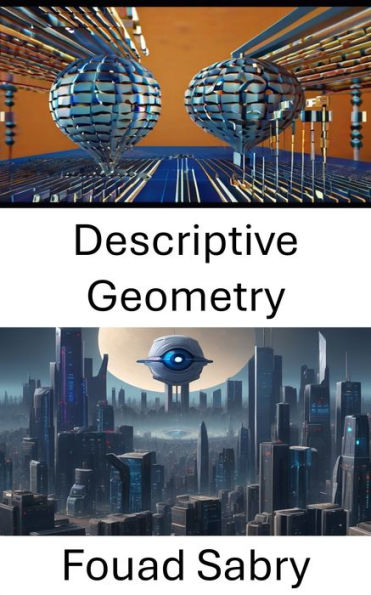What is Descriptive Geometry
Descriptive geometry is the branch of geometry which allows the representation of three-dimensional objects in two dimensions by using a specific set of procedures. The resulting techniques are important for engineering, architecture, design and in art. The theoretical basis for descriptive geometry is provided by planar geometric projections. The earliest known publication on the technique was "Underweysung der Messung mit dem Zirckel und Richtscheyt", published in Linien, Nuremberg: 1525, by Albrecht Dürer. Italian architect Guarino Guarini was also a pioneer of projective and descriptive geometry, as is clear from his Placita Philosophica (1665), Euclides Adauctus (1671) and Architettura Civile, anticipating the work of Gaspard Monge (1746-1818), who is usually credited with the invention of descriptive geometry. Gaspard Monge is usually considered the "father of descriptive geometry" due to his developments in geometric problem solving. His first discoveries were in 1765 while he was working as a draftsman for military fortifications, although his findings were published later on.
How you will benefit
(I) Insights, and validations about the following topics:
Chapter 1: Descriptive geometry
Chapter 2: Analytic geometry
Chapter 3: Affine transformation
Chapter 4: Orthographic projection
Chapter 5: 3D projection
Chapter 6: Oblique projection
Chapter 7: Vanishing point
Chapter 8: Picture plane
Chapter 9: Line (geometry)
Chapter 10: Parallel projection
(II) Answering the public top questions about descriptive geometry.
(III) Real world examples for the usage of descriptive geometry in many fields.
Who this book is for
Professionals, undergraduate and graduate students, enthusiasts, hobbyists, and those who want to go beyond basic knowledge or information for any kind of Descriptive Geometry.
What is Descriptive Geometry
Descriptive geometry is the branch of geometry which allows the representation of three-dimensional objects in two dimensions by using a specific set of procedures. The resulting techniques are important for engineering, architecture, design and in art. The theoretical basis for descriptive geometry is provided by planar geometric projections. The earliest known publication on the technique was "Underweysung der Messung mit dem Zirckel und Richtscheyt", published in Linien, Nuremberg: 1525, by Albrecht Dürer. Italian architect Guarino Guarini was also a pioneer of projective and descriptive geometry, as is clear from his Placita Philosophica (1665), Euclides Adauctus (1671) and Architettura Civile, anticipating the work of Gaspard Monge (1746-1818), who is usually credited with the invention of descriptive geometry. Gaspard Monge is usually considered the "father of descriptive geometry" due to his developments in geometric problem solving. His first discoveries were in 1765 while he was working as a draftsman for military fortifications, although his findings were published later on.
How you will benefit
(I) Insights, and validations about the following topics:
Chapter 1: Descriptive geometry
Chapter 2: Analytic geometry
Chapter 3: Affine transformation
Chapter 4: Orthographic projection
Chapter 5: 3D projection
Chapter 6: Oblique projection
Chapter 7: Vanishing point
Chapter 8: Picture plane
Chapter 9: Line (geometry)
Chapter 10: Parallel projection
(II) Answering the public top questions about descriptive geometry.
(III) Real world examples for the usage of descriptive geometry in many fields.
Who this book is for
Professionals, undergraduate and graduate students, enthusiasts, hobbyists, and those who want to go beyond basic knowledge or information for any kind of Descriptive Geometry.

Descriptive Geometry: Unlocking the Visual Realm: Exploring Descriptive Geometry in Computer Vision
104
Descriptive Geometry: Unlocking the Visual Realm: Exploring Descriptive Geometry in Computer Vision
104
Product Details
| BN ID: | 2940168096263 |
|---|---|
| Publisher: | One Billion Knowledgeable |
| Publication date: | 05/05/2024 |
| Series: | Computer Vision , #121 |
| Sold by: | PUBLISHDRIVE KFT |
| Format: | eBook |
| Pages: | 104 |
| File size: | 2 MB |
